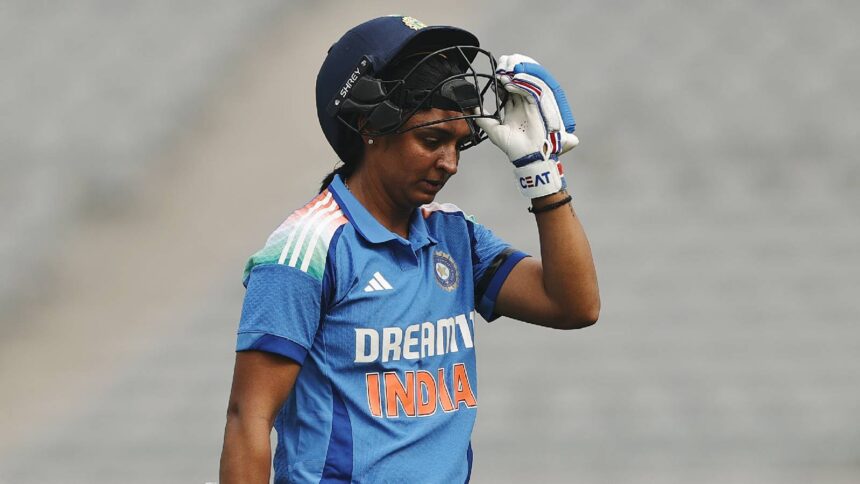In nearly three decades that they have faced off in women’s One Day Internationals, Sri Lanka defeated India for only the third time on Sunday in Colombo. After posting 275/9 when batting first, Harmanpreet Kaur and Co went down by 3 wickets as the hosts chased down the target with three wickets and five balls to spare in a superbly constructed run-chase. It was Sri Lanka’s second-best successful run chase ever in the format. And the last time Indian women had lost an ODI against Sri Lanka was way back in 2018. It comes on the back of India losing the Asia Cup final last year (in T20 format) and nearly allowing South Africa to overhaul a very similar target a few days earlier in this tournament.
By quite a few metrics, this defeat comes as a serious wake-up call to a side that is hosting the 50-over World Cup in 5 months. That is if India can identify the warning signs that have been there for a while.
For the second match running, they posted around 275 when at least 290-plus was on the cards – a problem that has been persistent in terms of being conservative in their batting approach. Just as they did against South Africa, India’s bowlers struggled to break partnerships, allowing the match to drift at times, till the intensity picked up once more at the end. While fielding intensity has largely been above par, the occasional mistakes still haunt them. South Africa nearly exploited all this in the previous match, until Sneh Rana came up with a three-wicket over at the end. But Sri Lanka were much more clinical this time around, making it to back-to-back wins for themselves to keep the tournament’s business end wide open.
Batting first, Smriti Mandhana and Pratika Rawal once again looked solid, stitching together their eighth 50-plus partnership in their ninth time batting together. But not for the first time, they had a mix-up running between the wickets, and Mandhana’s concerning trend of gifting her wicket to the opponents in the most innocuous manner continued. Rawal too couldn’t keep her streak of 50-plus scores going, falling for a decent 35. It meant an opportunity for the middle order to spend significant time in the middle. Harleen Deol and Harmanpreet Kaur fell for 29 and 30 respectively, the former at least showing better intent in this match. Jemimah Rodrigues has been one of India’s busiest batters in this format, but couldn’t convert a start again into something substantial. Only Richa Ghosh – who was by some distance the most aggressive Indian batter – crossing fifty. Her knock is a template perhaps her teammates can try and embrace more often, with the top order currently taking far too much time to settle in before moving through the gears. Harmanpreet admitted later that India were short of the total they were aiming for when Ghosh was going strong.
The second powerplay proved to be one of the major differentiators against Sri Lanka. While India scored 151/4 in those 30 overs, Sri Lanka managed a superb 183/4. That India managed to score an almost similar 152/3 against South Africa is another indication of a team being set in their ways.
In the run chase, Nilakshika Silva’s stroke-filled 56 came off just 33 balls. But even after her dismissal, India could have tightened the screws on the 8th wicket partnership, instead they were largely passive while Sri Lanka completed a famous win.
Brief scores: India 275/9 in 50 overs (Richa Ghosh 58, Jemimah Rodrigues 37, Chamari Athapaththu 3/43) lost to Sri Lanka 278/7 in 49.1 overs (Nilakshika Silva 56, Harshitha Samarawickrama 53, Sneh Rana 3/45) by 3 wickets.








